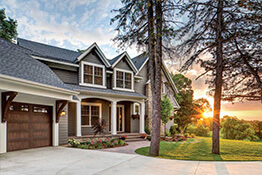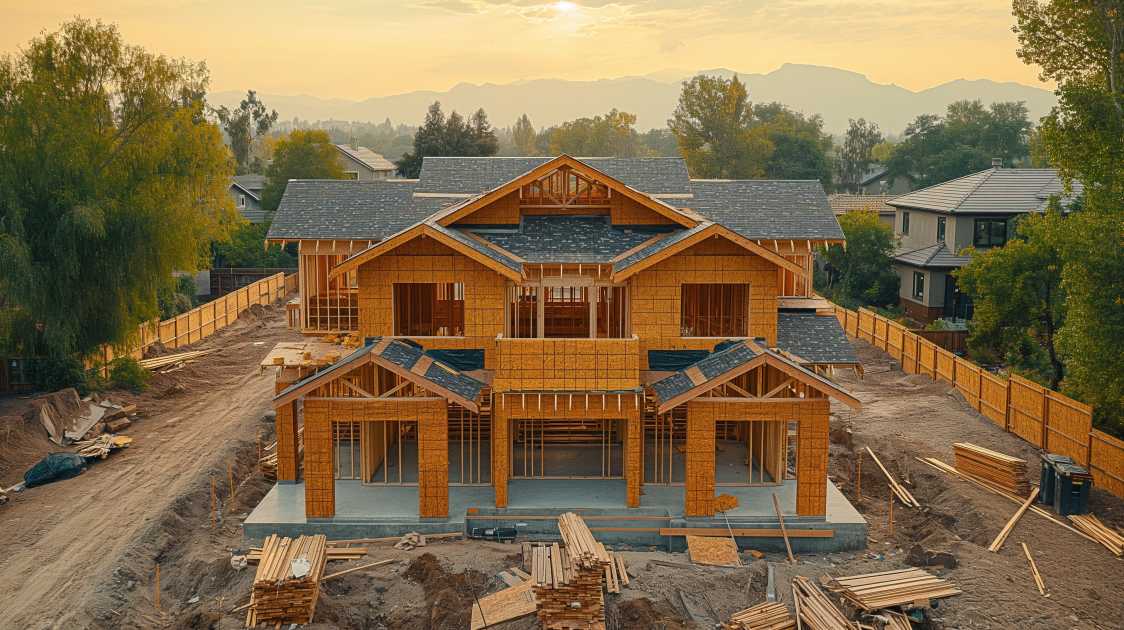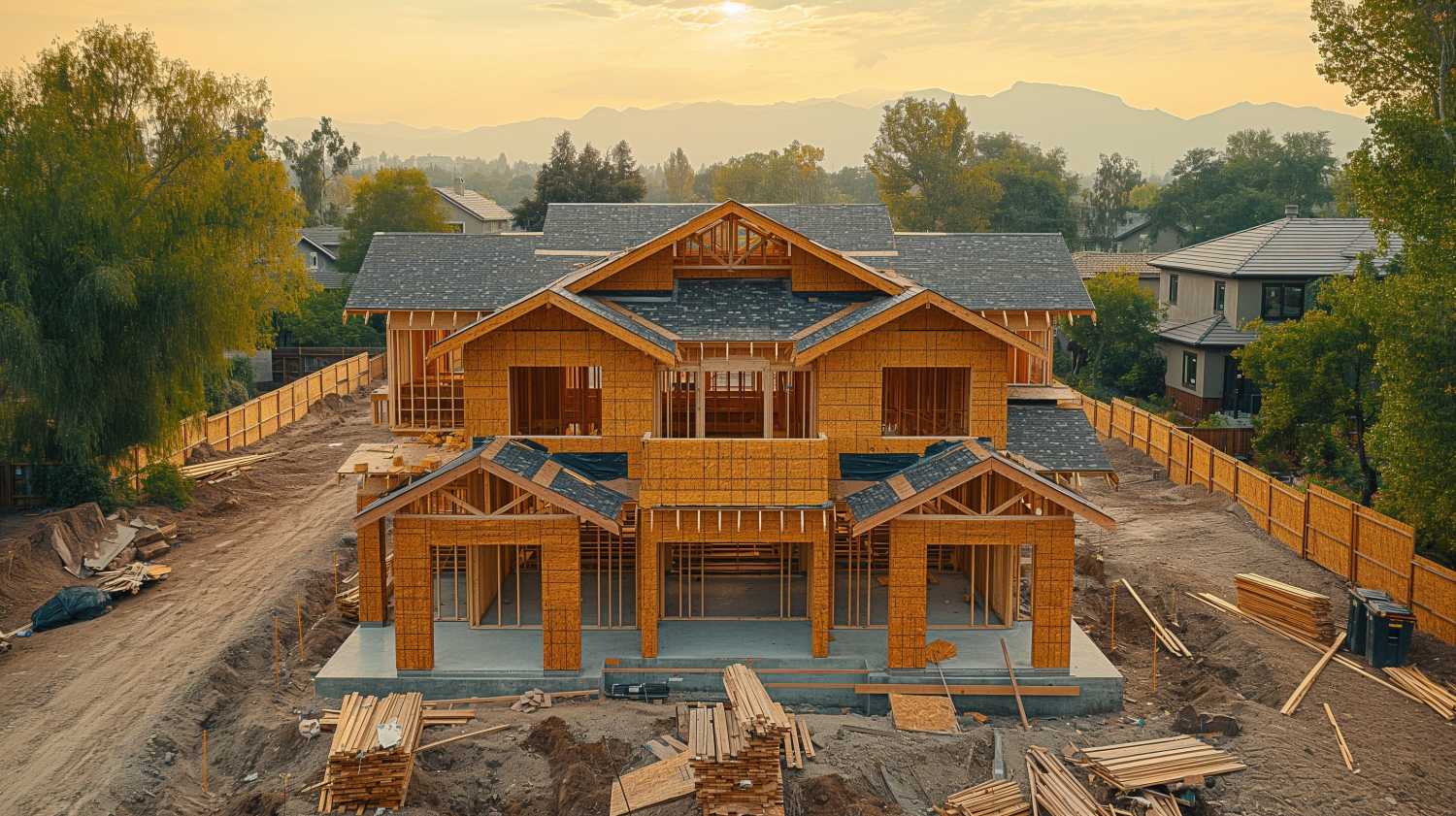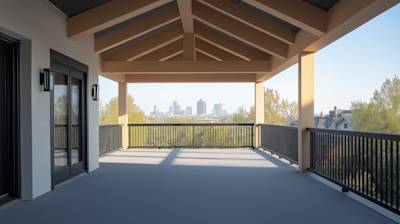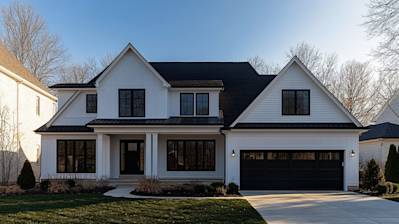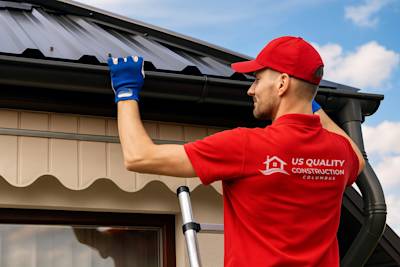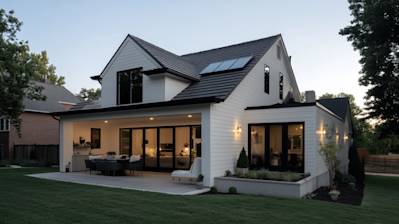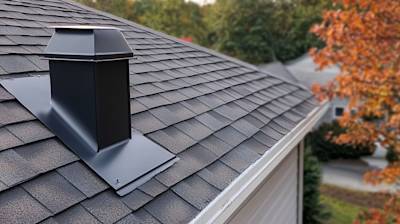When constructing a residential or commercial building, one of the most critical elements you should never ignore is roof sheathing. This component, also referred to as roof decking, plays a vital role in safeguarding your home from extreme weather conditions while also providing additional insulation. This comprehensive guide will provide in-depth information on roof sheathing, its importance, materials commonly used, as well as the process involved in installing roof sheathing.
What is Roof Sheathing?
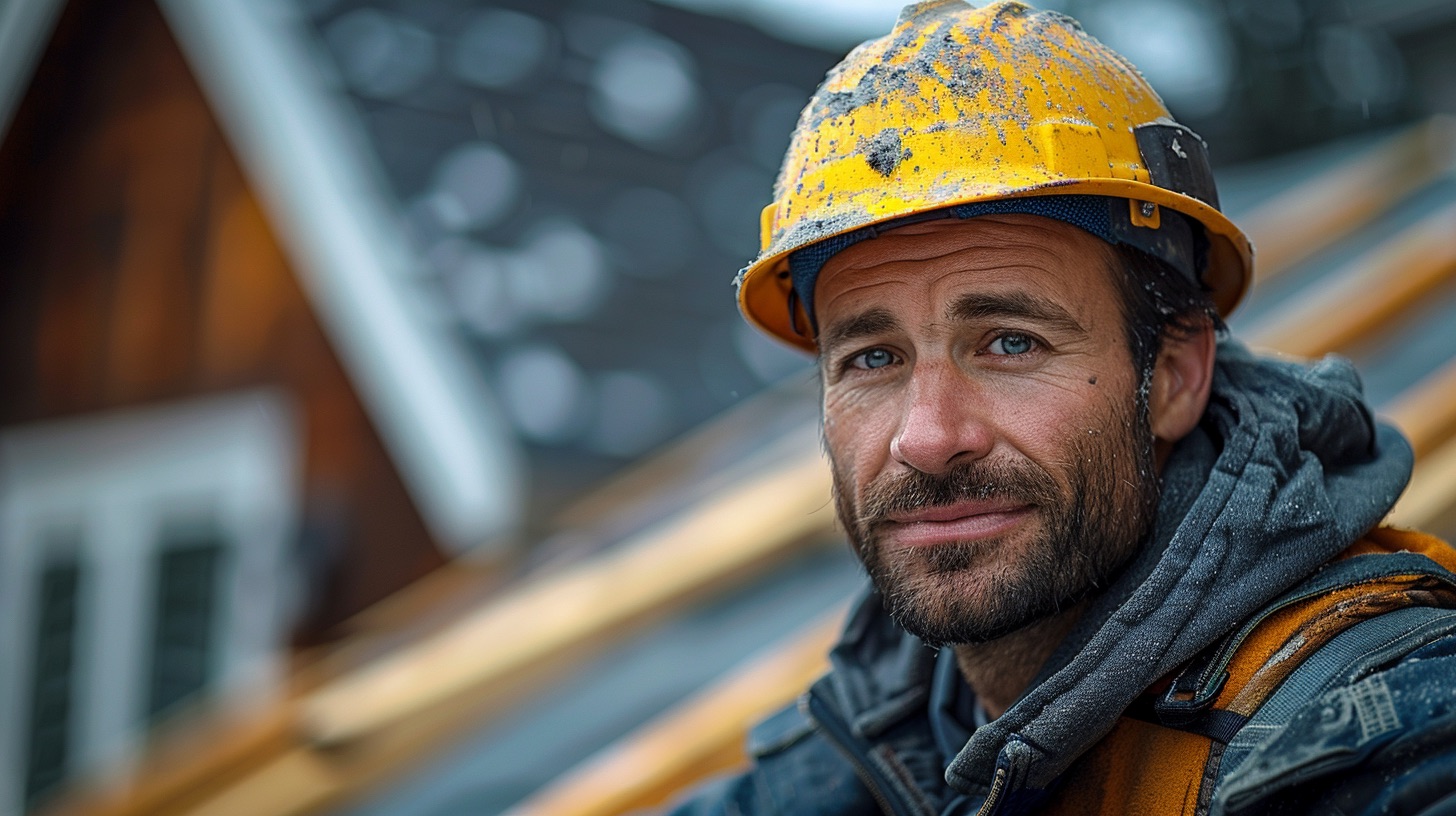
Roof sheathing makes up the underlying surface of your roof. Typically made from panels of wood or a similar material, this surface rates as an essential support feature for shingles, tiles, or metal sheathing. Roof sheathing simultaneously adds another layer of protection against harsh weather for the internal components of your house, helping to prevent leaks, mold, and mildew.
The Importance of Roof Sheathing
The significance of roof sheathing in a building cannot be overstated. Not only does it play a crucial role in the overall structure of your roof, but it also serves multiple other purposes.
-
Durability: Quality roofing sheathing improves the durability of your roof, contributing to its overall lifespan.
-
Weather Protection: One of its primary roles is to serve as a barrier against harsh weather conditions, including wind, sun, and heavy rain.
-
Support for Roof Coverings: Roof sheathing provides a flat, solid surface that aids in supporting various types of roofing materials, including shingles, metal, or tiles.
Commonly Utilized Roof Sheathing Materials
Different materials suit different types of roof sheathing, depending on factors like the building’s design and the local climate. The following are some standard materials used in roof sheathing construction:
-
Plywood: This robust and long-lasting wood product is popular because of its high weight-to-strength ratio, making it suitable for various roof types.
-
Oriented Strand Board (OSB): OSB is an economical and durable alternative to plywood. It’s comprised of engineered wood strands bonded together using adhesives.
-
Polystyrene Panels: Polystyrene offers excellent insulation, ensuring your home remains warm in the winter and cool in the summer.
Installation Process for Roof Sheathing
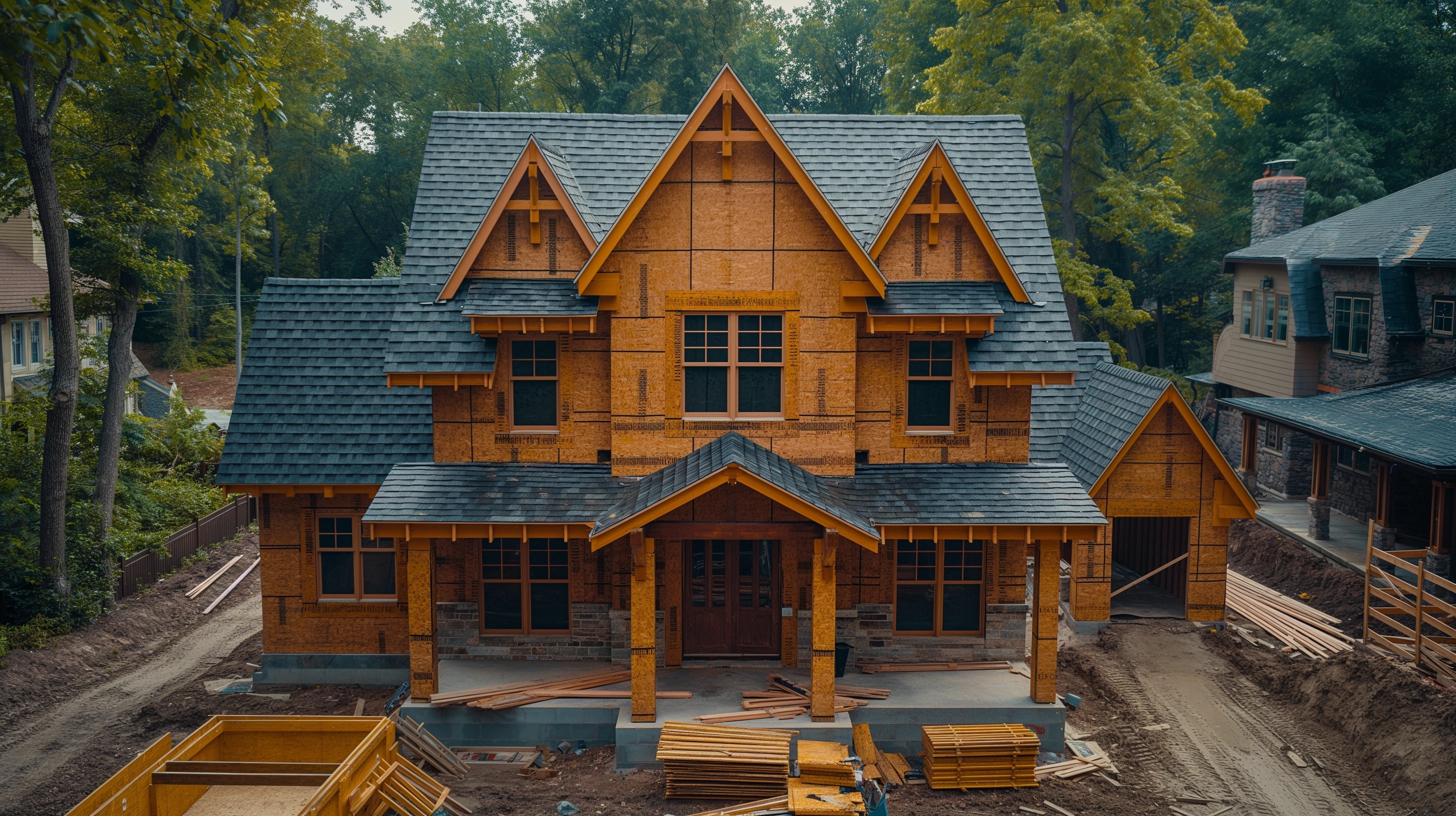
The installation of roof sheathing demands precise planning, expertise, and knowledge, as it forms the base of the entire roofing system.
Preinstallation Stage
Prior to the actual installation, experts take careful measurements of the roof area before cutting the sheathing material to the appropriate sizes. The preinstallation process also involves a detailed assessment of the roofing structure to ascertain its strength and stability.
Actual Sheathing Procedure
The actual sheathing procedure commences by laying the panels in a horizontal manner. Once laid, they are then fastened with nails at intervals of 6 inches along the supported panels, ensuring maxium rigidity.
Post-Installation Inspection
After installing the entire roof sheathing, a thorough inspection is conducted to ensure all panels lie flat against the roof frame. Such inspections help in detecting any errors or issues that could potentially undermine the integrity of the roof sheathing over the long term.
Roof sheathing serves as an integral part of your building’s structure. Not only does it protect your interior against weather elements and extreme conditions, but it also provides crucial structural support. As such, it's critical to choose the right sheathing materials, and employ expert installers to ensure your roof sheathing installation is a resounding success.
FAQs on Roof Sheathing
What are the different types of roof sheathing?
There are several different types of roof sheathing, including plywood, oriented strand board (OSB), and fiberboard. Each type of roof sheathing has its own unique characteristics and benefits. Plywood is often considered the standard for roof sheathing and is most commonly used due to its strength and durability. OSB is similar to plywood but is generally more affordable, while fiberboard is usually lighter and easier to handle but might not be as durable.
Why is roof sheathing crucial?
Roof sheathing carries several key responsibilities in your home's structure. It creates a supportive layer for your roofing materials — be it shingles, metal or rubber. It enhances the structural integrity by connecting the roof's structure, thereby preventing it from racking or moving due to harsh weather conditions. Moreover, roof sheathing acts as a barrier against external elements such as rain, snow, and wind.
How often should roof sheathing be replaced?
The lifespan of roof sheathing largely depends on the material and its exposure to elements. Normally, sheathing lasts as long as the roof covering material—around 20 to 30 years. However, factors like water damage, severe weather, or pest infestation can reduce this span. Roof sheathing may need replacement during reroofing if it has deteriorated or damage persisting that can't be repaired.
Can you install roof sheathing by yourself?
Technically speaking, yes, you can install your own roof sheathing if you have the necessary skills and the right equipment. However, it is typically recommended to hire a professional to do the job. This is because incorrect installation of roof sheathing could lead to serious structural issues down the line. Professionals have the necessary training to install roof sheathing safely and correctly, ensuring long-term performance.
What thickness should roof sheathing be?
The thickness of roof sheathing is determined by the material and the roof design. Traditionally, plywood roof sheathing spans 5/16-inch, 3/8-inch, and 1/2-inch thicknesses. For OSB, 7/16-inch is common. Local building codes may also play a role in determining the minimum acceptable thickness for your roof sheathing.
Is there any difference between decking and sheathing?
Roof decking and roof sheathing are actually the same thing but referred to by different terms. Essentially, both provide the structural surface over the rafters where roofing materials, like shingles or metal, are attached. However, some regions or professionals may use "decking" instead of "sheathing," but they are interchangeable.
What could happen if you ignore damaged roof sheathing?
Ignoring damaged roof sheathing could lead to serious problems. Water can easily penetrate deteriorated or damaged sheathing and cause problems like mold growth, rotting, and deterioration of interior building materials. Moreover, a compromised roof sheathing reduces the stability of your roof, making it vulnerable to wind uplift or heavy snow loads. It is, therefore, essential to fix any damage to the roof sheathing as soon as it's noticed.
Which roofing nails are recommended for sheathing?
The type of roofing nails used for sheathing typically depends on your local building code requirements and the type of sheathing material. Typically, 8d ring-shank nails are recommended for plywood and OSB roof sheathing. They provide excellent holding strength and reduce the risk of popping caused by changes in temperature or humidity.
Pros & Cons of Roof Sheathing
Pros of Roof Sheathing
Improved Structural Stability
Roof sheathing plays a crucial role in enhancing a roof's structural stability. Rooftop sheathing serves as the foundation for your shingles and provides extra support for your roof trusses or rafters.
- Without it, your roof would be at risk of shifting, leading to various issues such as leaks or cracks.
- Roof sheathing ensures all roofing materials connect seamlessly to provide a sturdy, stable structure.
Protection Against Weather Elements
Roof sheathing serves as the first line of defense against harsh weather elements such as heavy rains, snow and hail.
- It acts as a barrier, preventing these elements from causing damage to the rafters.
- Sheathing also aids in wind resistance, which can prevent uplift during stormy conditions.
Thermal Insulation
Roof sheathing can contribute to the thermal insulation of a house, enhancing its energy efficiency. Premium roof sheathing variants contain integrated radiant barriers.
- These radiant barriers reflect heat, keeping homes cooler during summers and warmer in winters.
- In turn, this can lead to lower heating and cooling costs.
Cons of Roof Sheathing
Installation Cost
The cost of roof sheathing installation can be high, which may add a substantial amount to your overall roof installation or replacement costs.
- The costs of roof sheathing generally depend on the material used, with options such as plywood, oriented strand board (OSB), or high-performance panels.
- Additionally, labor costs for installation can also be high, especially if you are looking for experienced and skilled roofers.
Maintenance and Repairs
Roof sheathing requires regular maintenance to keep it in optimal condition.
- It should receive regular inspections, especially after severe weather to spot any potential damage.
- If poorly maintained, roof sheathing may rot or deteriorate over time, leading to costly repairs or even replacement.
Vulnerability to Moisture Damage
While roof sheathing offers protection against harsh weather, it is somewhat vulnerable to moisture damage.
- Moisture can seep through if the roof is not properly sealed, leading to mold and mildew growth.
- Over time, excessive moisture can cause the sheathing to rot or warp, compromising the structural integrity of your roof.
Expansion and Contraction
Another downside to consider about roof sheathing is the potential for expansion and contraction due to temperature fluctuations.
- This can cause cracks or gaps between the sheathing panels, affecting the sheathing's performance and lifespan.
- Expansion can cause panels to 'buckle' and may lead to visible waviness in the roof line, often referred to as 'roof sag' or 'roof droop'.
Summary
The benefits provided by roof sheathing are undeniable. It not only provides a flat surface where the roofing materials can be attached, but also enhances the entire structure's overall stability. There's no question that it's critical to the success of any roofing endeavor.
While the type of roof sheathing used tends to depend on the specific project, various materials like plywood, OSB, and more have been proven effective for this purpose. Therefore, the decision for the ideal roof sheathing must take into account the specific needs and requirements of the project.
The process of installing roof sheathing may be challenging for beginners, but with correct tools and guidance, it can be accomplished successfully. Quality roof sheathing will significantly contribute to the longevity and durability of the roof, making it an investment worth considering.
About US Quality Construction of Columbus
Welcome to US Quality Construction of Columbus, your trusted partner in all things construction. Standing tall in Columbus, OH, we pride ourselves in delivering high-quality workmanship and unmatchable customer service to every project. Expect nothing but the best, because our team of passionate, skilled professionals is dedicated to bringing to life your vision - whether it is a simple home remodeling or an intricate commercial establishment. With us, it’s always about quality, integrity, and commitment to your satisfaction.
Tags: roof sheathing, roof construction, home improvement,
